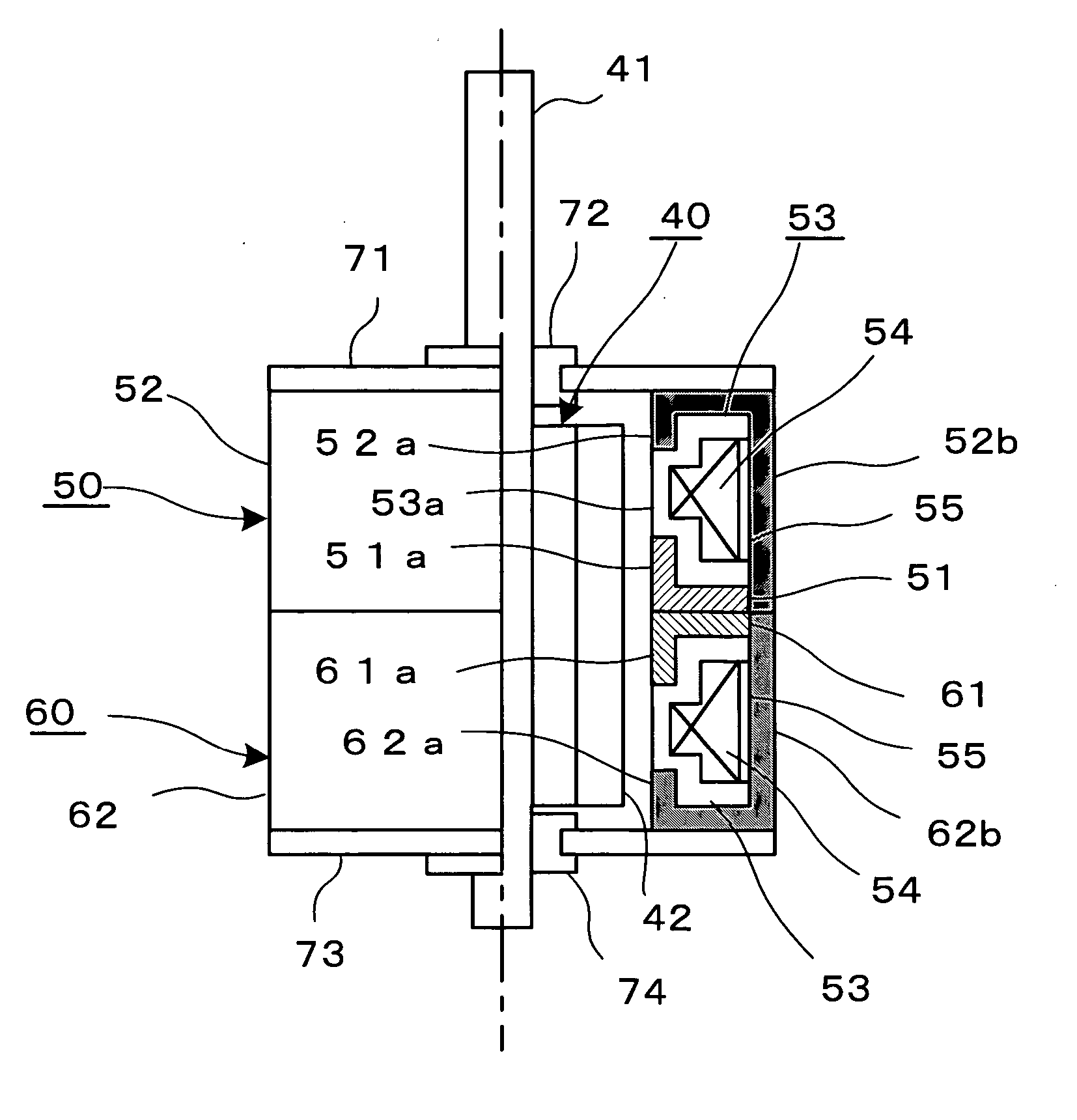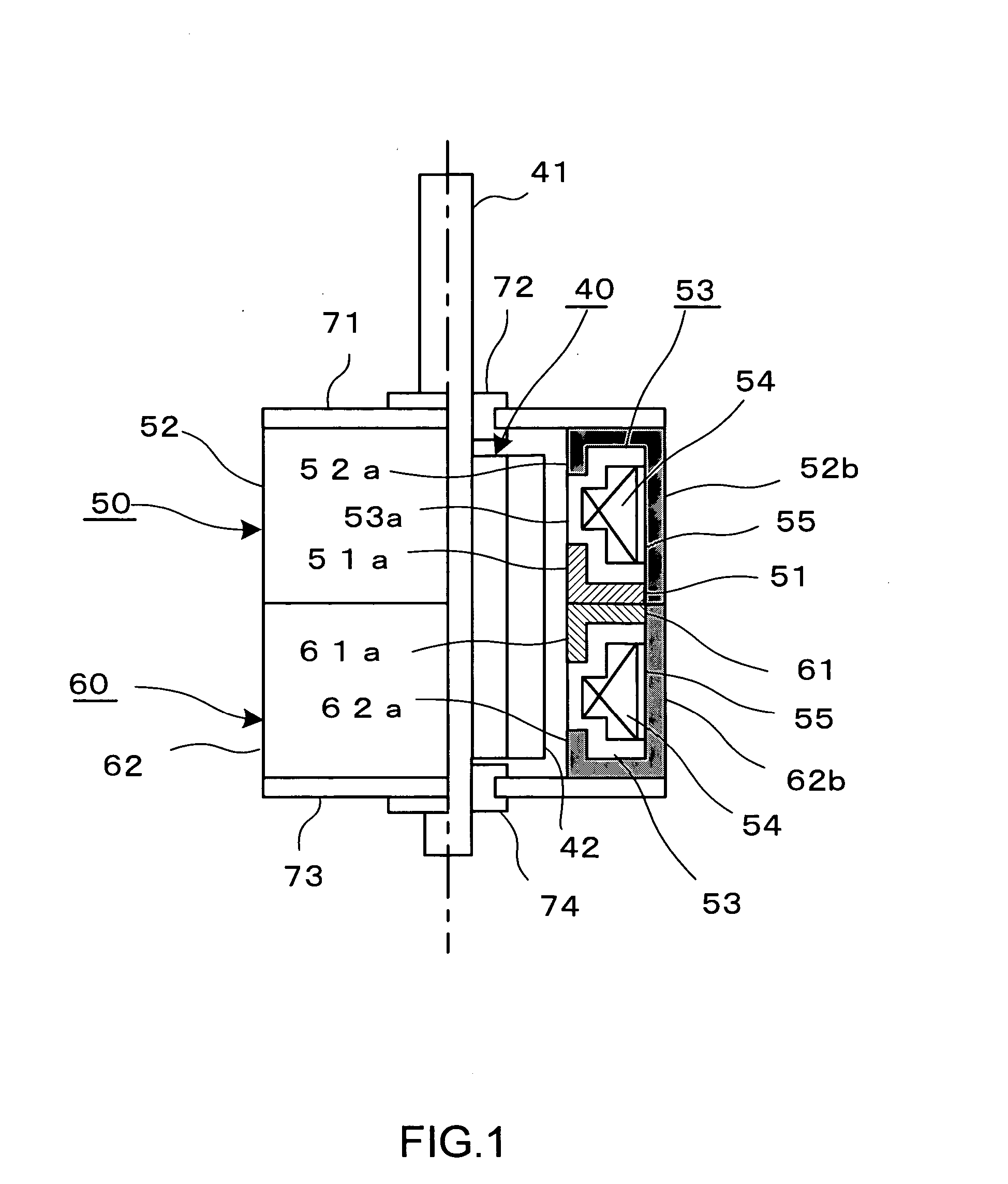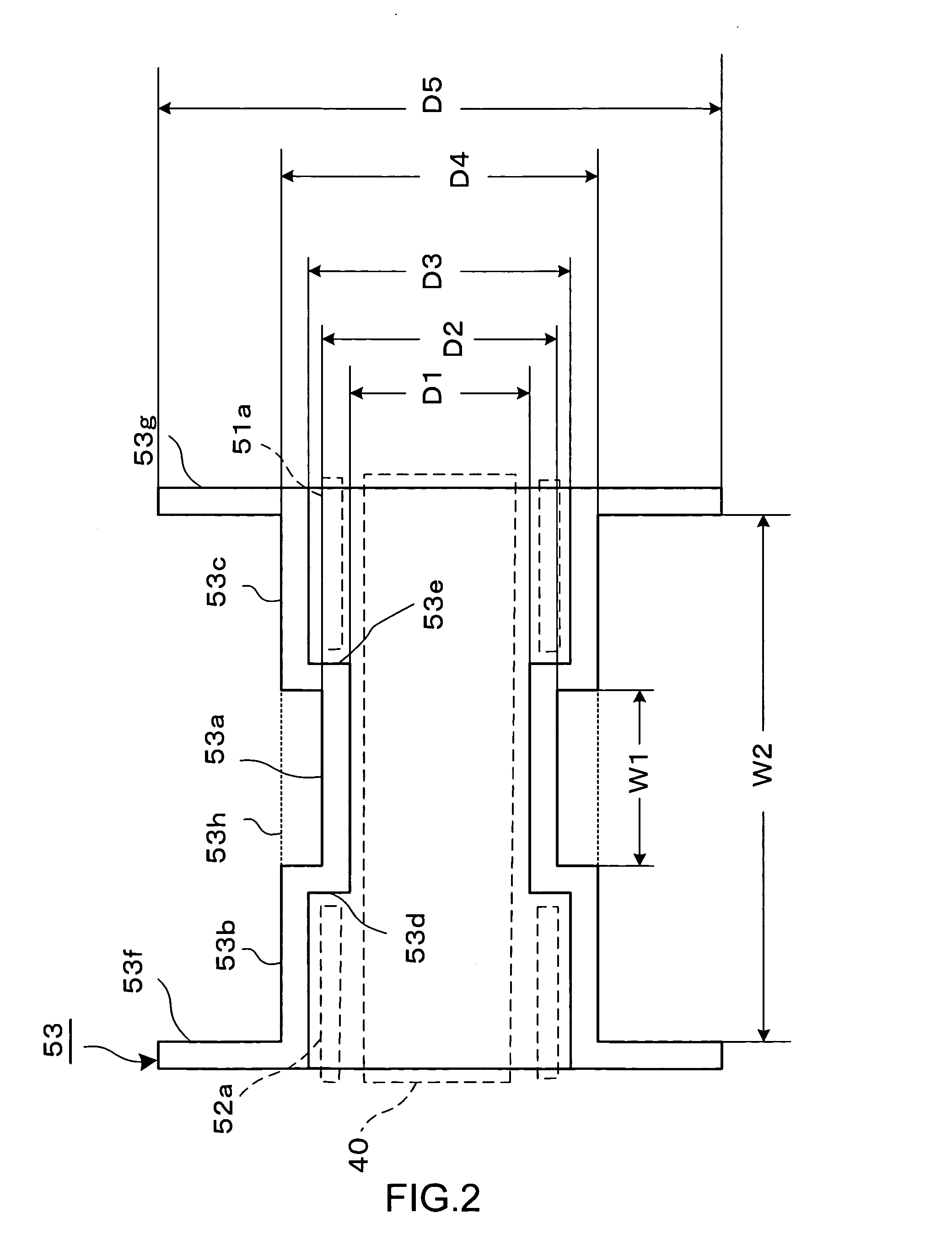Bobbin, motor, and method of winding magnet wire
a technology of winding magnet wire and bobbin, which is applied in the direction of windings, magnetic circuit rotating parts, magnetic circuit shape/form/construction, etc., can solve the problems of reducing the reliability of protection, limiting the approach, etc., and achieves the effect of increasing the winding space of a magnet, increasing the diameter of the flange, and increasing the motor dimension
- Summary
- Abstract
- Description
- Claims
- Application Information
AI Technical Summary
Benefits of technology
Problems solved by technology
Method used
Image
Examples
first embodiment
the present invention will be described with reference to FIGS. 1 and 2.
A stepping motor shown in FIG. 1 is capable of two-phase driving, and comprises a rotor assembly 40, and two stator units 50 and 60.
The rotor assembly 10 is shaped substantially cylindrical, and is composed of a permanent magnet with a plurality of magnetic poles 42, and a rotary shaft 41 passing through the center of the magnet.
The stator unit 50 includes first and second yokes 51 and 52 arranged to oppose each other, and a bobbin 53. The bobbin 53 has a magnet wire 54 wound therearound, and an insulator 55 is disposed around the magnet wire 54 wound. The bobbin 53 is sandwiched between the first and second yokes 51 and 52.
The first yoke 51 is punched out of a soft-magnetic plate into a disk having at its center a circular opening for letting the rotor assembly 40 through. A plurality of pole teeth 51a are formed along an inner circumference of the first yoke 51 defined by the circular opening and are be...
second embodiment
the present invention will be described with reference to FIG. 3.
A bobbin 81 shown in FIG. 3 is formed of synthetic resin, and comprises a middle body section 81a shaped hollow-cylindrical, and two lateral body sections 81b and 81c shaped hollow-cylindrical and having a larger diameter than the middle body section 81a. One end of the middle body section 81a is connected to one end of the lateral body section 81b via a joining section 81d with a gradual change in diametrical dimension thus not forming a step configuration, and the other end of the middle body section 81a is connected to one end of the lateral body section 81c via a joining section 81e with a gradual change in diametrical dimension thus not forming a step configuration. The hollows of the middle body section 81a, and the lateral body sections 81b and 81c are set coaxial to one another. A flange 81f is formed at the distal end of the lateral body section 81b so as to radially extend outward, and a flange 81g is formed...
PUM
 Login to View More
Login to View More Abstract
Description
Claims
Application Information
 Login to View More
Login to View More - R&D
- Intellectual Property
- Life Sciences
- Materials
- Tech Scout
- Unparalleled Data Quality
- Higher Quality Content
- 60% Fewer Hallucinations
Browse by: Latest US Patents, China's latest patents, Technical Efficacy Thesaurus, Application Domain, Technology Topic, Popular Technical Reports.
© 2025 PatSnap. All rights reserved.Legal|Privacy policy|Modern Slavery Act Transparency Statement|Sitemap|About US| Contact US: help@patsnap.com



